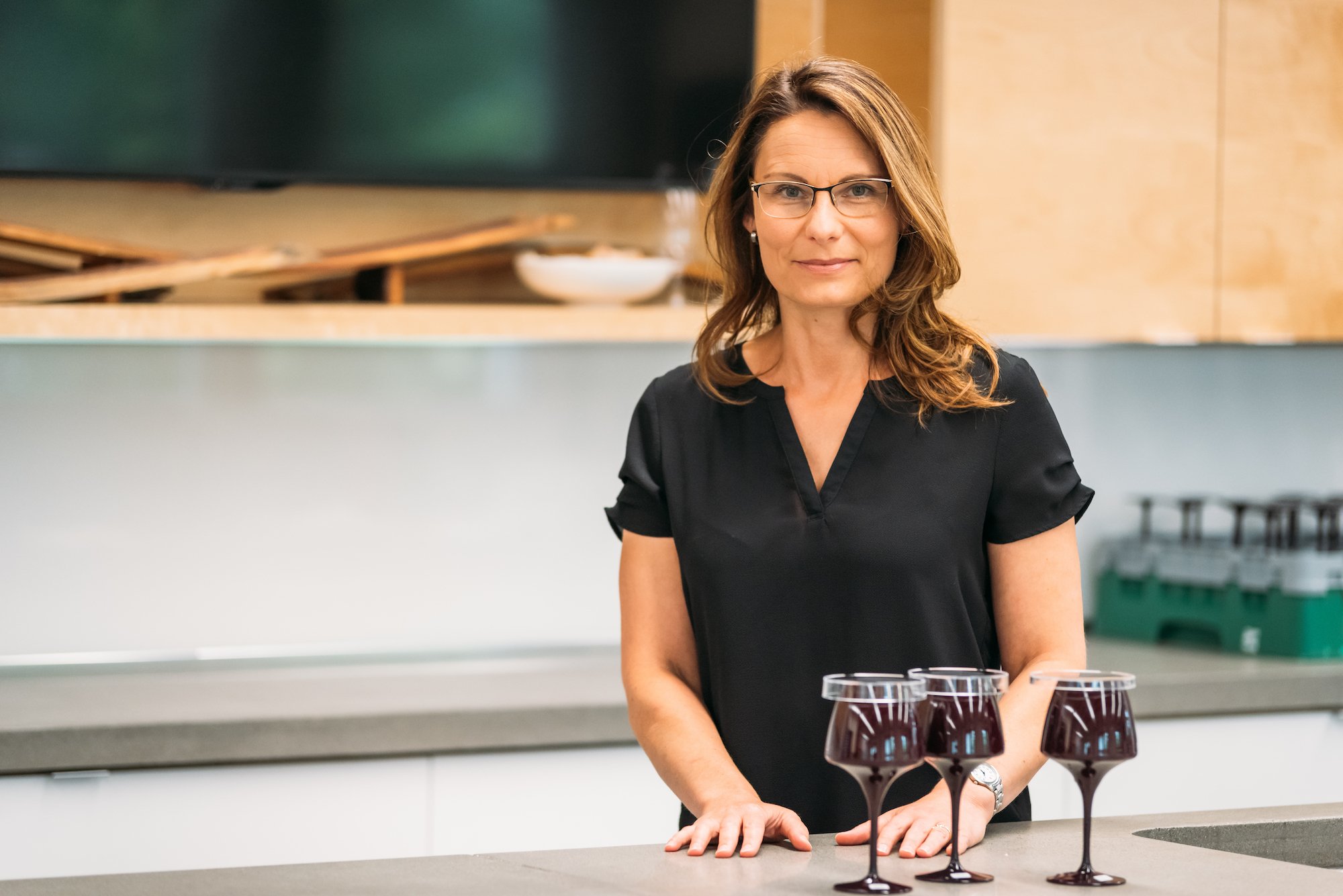A look into sensory evaluation methods for the quality control of food and beverages.
The sensory quality of food and beverages is an important aspect of overall quality. Sensory science ensures products meet quality specifications and customer expectations. Fraud management, product development, product identity-preservation and consumer insight are among the applications of sensory analysis. The sensory evaluation assesses a product’s overall sensory profile or the key sensory attributes of a food or beverage using analytical and statistically valid methods.
In this blog, we demonstrate how blind sensory analysis is performed on 3 consumer products (olive oil, bread and wine) towards ensuring product quality or meeting consumer preferences.
Sensory quality of olive oil
In 2017, laboratory test results conducted by the government of Canada showed that one-third of olive oil for sale in Canada did not meet international quality standards.1 Olive oil is a commodity that is globally marketed based on specific quality characteristics. It is also prone to adulteration with lower-priced oils.2 The “extra virgin” quality grade is unique to olive oil. Olive oil standards published by the International Olive Oil Council and the US government state that, as the CFIA puts it, “extra virgin olive oil must be cold pressed, does not contain any refined olive oil, and possess’ superior quality based on chemical composition and sensory characteristics.”3
The olive oil sensory evaluation methodology used by the International Olive Council (IOC) uses single attributes combined with intensity scales for the rating of positive descriptors and defects. The standard also describes how samples must be prepared and served and how the testing environment must be controlled. Statistical computations are used to compare the sensory data for each attribute to a reference.
Quantitative Descriptive Analysis is another recognized sensory method the panel leader can use to profile food and analyse sensory data obtained from attribute scales.
A sensory panel trained in quantitative descriptive analysis can provide valuable information that cannot be obtained by analytical methods alone. Dr. Jean-Xavier Guinard, professor of sensory science at UC Davis, offers the following comments on the usefulness on descriptive analysis applied to the evaluation of olive oil: “an oil that is identified as ‘extra virgin’ with a free fatty acid level below 0.4 and a peroxide level below 15 may be going flat [and] starting to turn rancid. Or conversely, an oil may be characterized as having a large number of complex fruit flavors, adequate pungency, but excessively high bitterness, which would likely not be appreciated by consumers.”4
Sensory panel for bread analysis – the influence of wheat cultivar on product sensory quality (Callejoa, Vargas-Kostiuka & Rodríguez-Quijanob, 2015)
The second example includes a proposed standardized protocol for the selection, training and validation of a sensory panel to evaluate the quality of bread made with wheat and spelt flour.4 The sensory quality of bread can be determined using objective analytical methodologies which involves the selection and training of a sensory panel. A key task is to select the most relevant sensory attributes that can be easily detected and identified by the panel for the samples under evaluation.
Initial panel screening
This case study followed a series of ISO sensory standards to ensure that the testing environment was suitable for sensory evaluation and that the samples were prepared and presented in a way that prevented sensory bias. An ISO standard was also used to screen panelists and ensure sensory performance. The initial panel screening included the evaluation of 13 aqueous solutions of 5 basic tastes and their dilutions to specific thresholds. Odour recognition was tested by placing 40 g of grated bread in glass jars spiked with specific aromatic compounds. The ranking was also used to assess visual descriptors such as “crust colour”, “crumb firmness” and “crumb elasticity”. Following the review of the screening tests, half of the participants were selected for further sensory training.
Panel training
The second phase of the training took place over 4 months with one training session per week. Three tests were administered weekly with a maximum of 4 samples per test. The objective of this training was for the panel to develop language around the sensory profile of bread and for participants to rate sensory descriptors using intensity scales. Discrimination tests (paired comparison tests) were used to provide each panelist with a sensory reference for bread texture, appearance, aroma and flavour. Some of the descriptive terms comprised: “moistness of bread crumb”, “crumb cells number” and “lactic odour and flavour”. The panel then familiarized itself with intensity scales and rating the sensory attributes.
Panel validation
Once the panel was able to reliably identify and rate descriptors using scales, a blind validation exercise was completed to confirm the panel’s ability to discriminate amongst samples. Discrimination tests (triangle tests) were used again towards this aim. Seven bread formulations were baked using the same ingredients but with varying amounts of sourdough and with different fermentation protocols. Some samples were also made using whole wheat flour, spelt wheat flour or rye flour. Once the validation step was successfully completed, the panel was ready to evaluate samples made with commercial flours.
Sensory profiling and discrimination testing
The trained and validated panel engaged in the evaluation of 5 types of bread that were made with three commercial varieties of wheat flour and two local varieties of spelt flour. Initially, a series of triangle tests were performed in duplicate to ensure that the panel members could distinguish amongst the 5 products. For each test, they described the sensory differences between the samples using the language they acquired during the 4-month training. Once this assessment was completed, they proceeded to perform a descriptive profiling of the 5 breads. Using the key sensory attributes identified during the triangle tests, panelists rated the intensity of each descriptor on an unstructured 10 cm scale anchored at the right and left end points. The assessment was performed in duplicate to assess panel reproducibility.
The degree of significance of triangle and paired comparison tests were established using statistical tables. For the quantitative assessment, Analysis of Variance (ANOVA) was used to compare intensity scores, followed by a Duncan pairwise comparison of means to differentiate amongst statistically significant bread descriptors. A statistical model comprising the following variables — Product, Judge, Replicate and their interactions — was utilised for the statistical analysis.
Sensory evaluation of wine using the Quini app.
Consumer insight is defined as “an interpretation of trends in human behaviours which aims to increase the effectiveness of a product or service for the consumer.”5 The sensory profile of wine is a determining factor that affects consumer preference and repeat purchase. To analyse consumer feedback, technology may be used to guide panellists (consumers in this case) and gather sensory data using a standardized evaluation protocol. The Quini app and integrated wine tasting event management system collects consumer feedback and insight for 40+ sensory and behaviour data points on wine.6 The system also provides access to consumer preferences in real time. The hedonic assessments can be conducted blind or non-blind, under controlled or uncontrolled conditions. The application computes an overall proprietary sensory score for wine based on appearance, aroma, flavour, finish, and overall. Integrated, advanced analytics and data visualization capture in-coming data on an on-going basis and deliver near real-time analysis of the results with multiple parameters and data cross-correlations. While the app collects and graphs individual and overall preference scores, it does not statistically compare group means to detect differences between wines. For a comparison of consumer scores, the data can easily be downloaded and analyzed using the ANOVA function of MS Excel. With all consumer sensory studies, the sample size is critical for market segmentation. While 25 to 50 consumer ratings are recommended for a small pre-screening test, 70 to 100 responses should be collected and analyzed for a consumer test that requires market segmentation. The panel size is really dependent on the level of complexity of the product sensory space.7
References
- Olive Oil Times article
- Vancouver Sun article
- CFIA – Labelling Requirements for Fats and Oils
- University of California Cooperative Extension Olive Oil Research Taste Panel
- Consumer insights definition (Wikipedia)
- Quini Data
- Sensometric conference presentation
Want to find out more about sensory tests and standards?
Review our previous blogs where the ASTM MNL14 sensory evaluation standard was introduced. We also discussed a case study related to the sensory evaluation of a product of designated origin.
Proficiency testing is a critical aspect of ensuring panel acuity and accurate sensory data. To find out more about how to train and validate your sensory panel, find solutions on the Aroxa blog.



